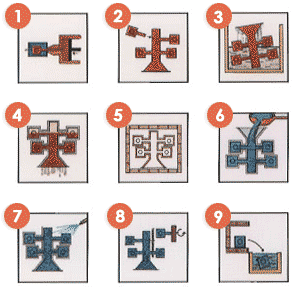Lost wax casting
From DDL Wiki
Current revision (01:52, 14 February 2007) (view source) |
|||
| Line 8: | Line 8: | ||
Posted by: Jackson Cheung, Mark Davis, Charlie DeMattia, John Diroll | Posted by: Jackson Cheung, Mark Davis, Charlie DeMattia, John Diroll | ||
| + | |||
| + | [[category:manufacturing]] | ||
Current revision
Lost wax casting, or investment cast is a manufacturing technique that produces parts with close tolerances through a casting process. The process itself involves creating a wax model of the final part, slightly oversized to allow for shrinkage. This process is usually done using an injection molding machine but because wax has different properties than plastic, it makes the cost of tooling and machines much less than for plastics. This model is then mounted on a wax tree that holds several parts together so taht they can be made at the same time. This entire setup is coated with ceramic slurry and stucco for several layers to make the mold. The mold is placed in an oven or steam chamber allowing the wax to melt and drip out. Any residual wax is expelled when the mold is fired to give it its strength. Molten metal is then poured into the mold and depending on how cooling is performed several results can be achieved. The three main products come out as equiax(natural cooling with standard grain boundaries), directional solidification(grain boundaries are all in one direction for more strength), or single crystal(no grain boundaries for highest strength).
Because of the process to create parts, it tends to be more costly than other manufacturing methods. Machinery and tooling are major costs, but in large enough quantities, these costs are spread over enough parts that cost per part is not to high. General uses are for blades and vanes for turbines sizing from small blades for jet engines to large blades for industrial gas turbines. Designing the part, tolerances must be paid close attention to, as well as making sure to leave shrinkage room when making your wax part. Also, if sections are too thick, extra steps need to be added to put a solid core in the wax part. Some design features such as bosses and undercuts are not used often because they add dramatically to cost. Other features such as radii and fillets are welcomed allowing for better metal flow eventually.
References: Boothroyd, Dewhurst, Knight, Product Design for Manufacture and Assembly, Marcel Dekker; New York, 2002. p549-592.
Posted by: Jackson Cheung, Mark Davis, Charlie DeMattia, John Diroll

